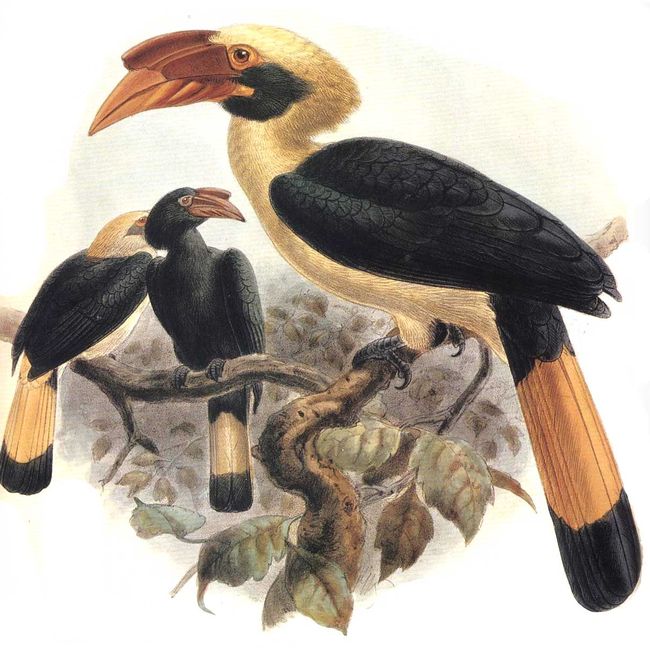|
Mindanao Tarictic Hornbill (Penelopides affinis affinis) - Wiki
| 제목: | Mindanao Tarictic Hornbill (Penelopides affinis affinis) - Wiki
| |

| 해상도: 650x650
파일크기: 78207 Bytes
등록시간: 2007:11:27 17:20:25
|
Mindanao Tarictic Hornbill
From Wikipedia, the free encyclopedia
Order: Coraciiformes
Family: Bucerotidae
[Photo] Mindanao Hornbill - Penelopides affinis - Calao de Mindanao. Author: Daniel Giraud Elliot (1835-1915). Source: http://www.oiseaux.net/photos/daniel.giraud.elliot/mindanao.hornbill.1.html
The Mindanao Tarictic Hornbill (Penelopides affinis affinis) is the nominate subspecies of a hornbill living in the rainforests of Maitum, Sarangani and in many parts of the island of Mindanao, Philippines, with two other subspecies occurring on Samar, Bohol, Leyte and Basilan. Like all hornbills, this bird is distinguished by its bill with a hollow horny "casque" on top of it. This "horn" is mainly made of keratin.
Other races
There are several races of this hornbill species. Many of the tarictic (Penelopides) hornbills are now considered to be separate species. Races remaining in P. affinis are:
Mindanao Tarictic Hornbill, Penelopides affinis affinis = found in the islands of Sarangani and Mindanao, Philippines
Samar Tarictic Hornbill, Penelopides affinis samarensis = found in the islands of Samar, Bohol, and Leyte, Philippines
Basilan Tarictic Hornbill, Penelopides affinis basilanica = found in Basilan, Philippines
Measurements
total length = 650 mm.
wing = 245 to 260 mm.
tail = 234 to 245 mm.
horn base to bill tip = 95 to 108 mm.
tarsus = 46 to 47 mm.
Habitat
Mindanao Tarictic Hornbills live in groups and frequent the canopy of rainforests. These birds are noisy and emit an incessant sound that sounds like ta-rik-tik, hence the name. Despite their noise they are difficult to find, being well camouflaged by the dense foliage.
Diet
The principal food of Mindanao Tarictic Hornbill is fruit. It also eats insects, beetles, ants and earthworms (rarely).
http://en.wikipedia.org/wiki/Mindanao_Tarictic_Hornbill
| The text in this page is based on the copyrighted Wikipedia article shown in above URL. It is used under the GNU Free Documentation License. You may redistribute it, verbatim or modified, providing that you comply with the terms of the GFDL. |
|
^o^
동물그림창고 똑똑전화 누리집
^o^
|
|